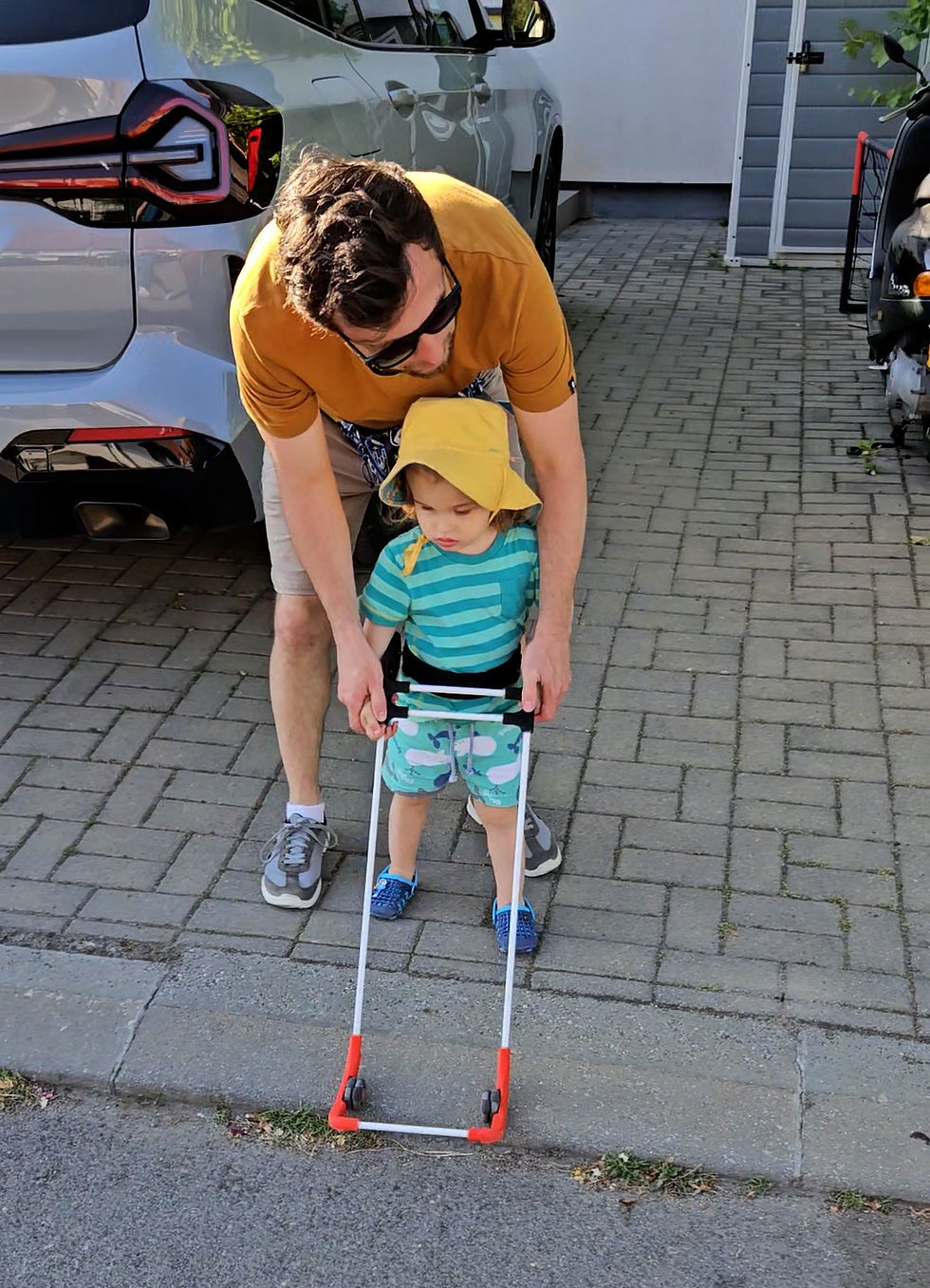The Pediatric Belt Cane Encourages Cane Control
- Grace Ambrose-Zaken

- Feb 20, 2020
- 2 min read
Updated: Jun 16, 2024
I recently posted a video of a concept lesson with a blind two year old girl, Charna, on Facebook. While most of the feedback was positive emoji "likes", "hearts" and "wow faces"; one Facebook poster expressed her concern that the belt cane is a passive tool that might prevent long cane skills from developing.
The immediate benefit of the belt cane for blind and mobility visually toddlers is that when they wear the belt cane they achieve easy access to safe mobility. It is true, on a smooth surface the cane frame does stay in front of them with little help. Since Charna is blind, she wears her cane most of the day, the terrain offers plenty of opportunities for learning cane control.
Charna began wearing her cane at two years old. You can follow her progress in belt cane manipulation over fifteen months by watching her video series on our website. At first, we see that she was barely able to manipulate her cane frame. After a month, she was able to “fix” her belt cane on her own, with prompts. Now she no longer has to be prompted to reposition her cane frame, but when she is seeking attention she has been known to push the cane frame behind her back. Then, when her parents call out “fix your cane,” she quickly moves it back in front and races to their voices.
In one video, Charna’s mom discusses her concern that when she visits friends and family Charna “bangs her cane” against their furniture. Her dad has filmed several videos documenting Charna exploring new houses and purposefully contacting their furniture with her cane frame.
A discerning eye notices that she appears to be using her cane to explore the objects, she checks how tall they are, how wide, and the sound they make. In Charna’s videos we also see how various sidewalk and playground textures challenge the position of the cane frame. She repeatedly has to reposition her cane in front, sometimes she lets it drag longer than other times. Sometimes the cane base catches something and she is pushed off balance.
On one walk she was preoccupied with a toy she was holding and her cane technique really suffered. When she fell down, her dad picked her up and she said, “hey, my toy is gone”. And he gave her back the toy.
Charna and other belt cane wearers cane let go of their cane frames anytime they need to for balance, to carry a toy, or to explore with their hands. The purpose of the belt cane is to provide young children who are blind and mobility visually impaired with the benefit of cane arc safe mobility. When the cane stops it prevents them from bodily collisions. When the cane frame drops down, it teaches them to stop at drop-offs.
Charna also uses her cane frame to learn more about the objects near her and the surfaces upon which she is about to trod. The belt cane provides the only safe mobility option for blind babies. Safe mobility provides blind and mobility visually impaired babies with the confidence they need to thrive.
The belt cane also teaches them to be cane users.








Comments